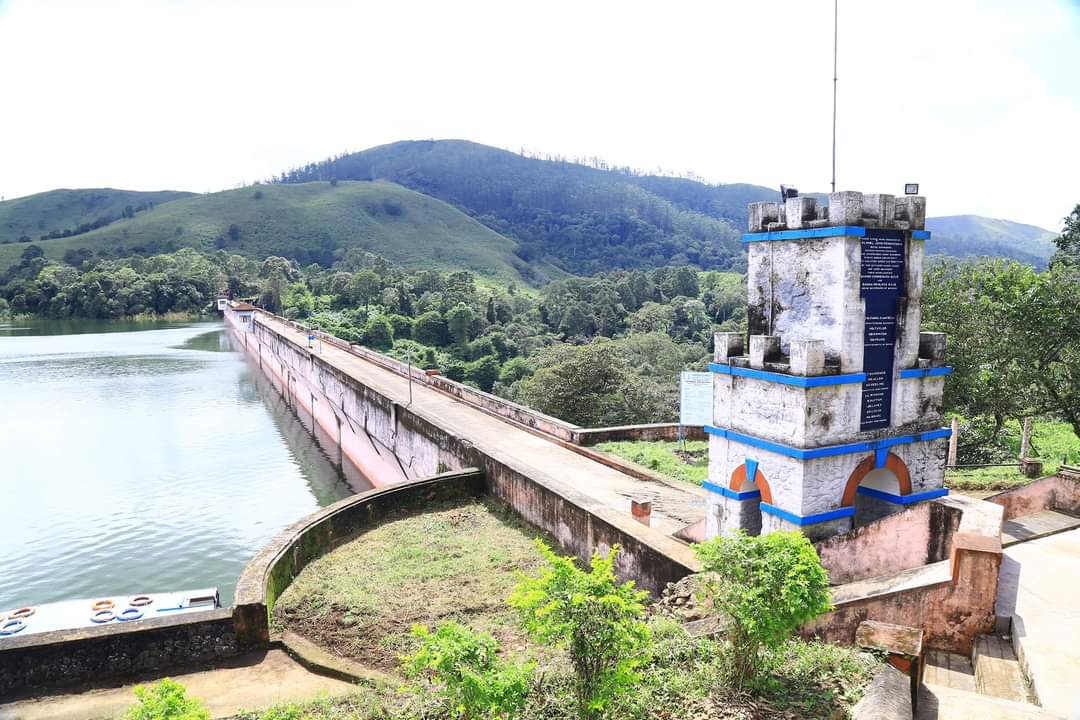The NYT essay said the 127-year-old Mullaperiyar Dam, a lime-concrete structure, is fast approaching obsolescence.
Published Oct 09, 2023 | 10:00 AM ⚊ Updated Oct 09, 2023 | 10:00 AM

A file picture of Mullapperiyar Dam. Photo: Special Arrangment.
Even as protests raged against a report in The New York Times (NYT) that provoked multiple raids on journalists and the subsequent arrests of Prabir Purkayastha and Amit Chakravarty of NewsClick in India, yet another article in the 172-year-old US newspaper — raising safety concerns over the Mullaperiyar dam constructed across the Periyar river — is having repercussions in distant Kerala
The guest essay, Which of the World’s Hundreds of Thousands of Aging Dams Will Be the Next to Burst? published on 17 September, said “Mullaperiyar Dam in Kerala, India, is over 100 years old, visibly damaged, and located in a region prone to earthquakes. Its collapse would harm 3.5 million people downstream.”
Though owned, operated, and maintained by Tamil Nadu, the 127-year-old dam is situated in the upper reaches of Idukki. Water from the reservoir is diverted through tunnels to the arid southern districts of Tamil Nadu.
People in Idukki have often raised concerns over the dam, constructed using limestone and surkhi — a mixture of burnt brick powder, sand, and sugar. Any breach — like the recent instances in Libya and Sikkim — would cause insurmountable damage and fatalities downstream.
Mullaperiyar meets the drinking water requirements of the Theni, Dindigul, Madurai, Sivaganga, and Ramanathapuram districts of Tamil Nadu, apart from irrigating 2.19 lakh acres.
The NYT report, however, ratified Kerala’s long-pending claim that the lime concrete structure is a ticking water-bomb that could explode any moment, causing thousands of deaths in the state. However, Tamil Nadu still considers it safe and well-maintained, and persists in raising the water storage level to a maximum of 152 feet.
On Sunday, 8 October, the Idukki diocese of the Syro-Malabar Catholic Church raised concern over the dam based on the newspaper article. It urged the state and Union governments to find a permanent solution to the issue. In its statement, the Idukki diocese said that the article on Mullaperiyar that poses a danger to over 35 lakh people was “a matter of grave concern”.
“The New York Times reports that the Mullaperiyar dam is in a state of danger, threatening the lives of 35 lakh people, and is a matter of grave concern for the people in Idukki, Ernakulam, Kottayam, and Alappuzha districts. The Kerala and Tamil Nadu state governments should address this issue urgently,” Fr Jins Karackattu, Director of the Media Commission of the Idukki diocese, said in the statement.
The NYT article, by Josh Klemm and Isabella Winkler, claimed that “the biggest danger is in India and China, where 28,000 large dams built in the mid-20th century are now nearing obsolescence”.
The Church, the largest congregation of people downstream of Mullaperiyar, also urged the Union government to interfere as it concerns two states.
The ruling CPI(M) had made its policy clear for constructing a new dam in place of the existing structure. Mullaperiyar dam and its 999-year water lease agreement between the erstwhile royal regime of Travancore and the Madras Presidency has been a bone of contention between the two neighbours for quite some time.
Though Kerala has been demanding a new structure to replace the existing one, the Supreme Court held that the reservoir was safe and allowed Tamil Nadu to raise the water level after strengthening the dam.
“The collapse of two dams in Libya, unleashing torrential floodwaters that the United Nations has said left at least 11,300 people dead and over 10,000 still missing, was predicted and preventable.
“And they won’t be the last big dams to collapse unless we remove and repair some ageing and obsolete structures long past their expiration date,” the NYT said.
The proposal for a new dam is also facing resistance as it would be constructed in an earthquake-prone area, and it would cause enormous destruction to the Periyar Tiger Reserve.
